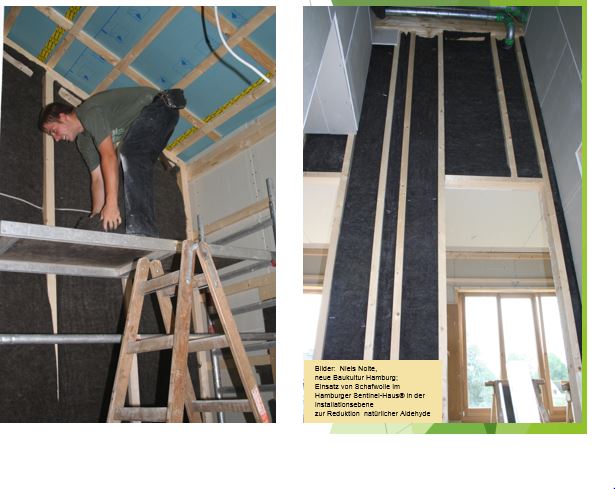
Translated from airwool.com
Increasing requirements for “low – emission buildings” (various building certificates with defined room air quality, especially with regard to VOCs and formaldehyde ) – but above all also real bases on the topic of “residential health” , reinforced by a new classification of formaldehyde as a Carcinogenic and new labeling requirements from April 2015
Are an enormous challenge for developers, landlords, planners and the entire construction industry, in addition to increasing consumer demands for healthy living space from a purely “economic point of view”.
However, there is still a considerable increase in pollutant concentrations in existing buildings – especially in schools and day care centers (children have an increased air flow rate and therefore an increased intake of pollutants) should be taken immediately in case of suspicion of stress! (See also Pollutant refurbishment and video sheep wool 2007 )
In recent years, the use of sheep wool has become increasingly successful both in preventive use (new construction) and in refurbishment (especially formaldehyde rehabilitation).
POLLUTION PREVENTION
For decades (first studies from Australia) the ability of sheep wool is known to “permanently” degrade pollutants (especially formaldehyde).
Professional use was made in Germany of wool wool for the first time in 1997 for the formaldehyde rehabilitation of a kindergarden by the eco Institute Cologne (Dr. Zwiener); Extensive research was carried out in collaboration with the Wollsuchschinginstitut at the TH Aachen (Dr. Wortmann), the eco Institute and the company Doppelmayer (Dr.Sweredjuk). In the meantime, sheep wool has been successfully used in numerous formaldehyde restorations in public buildings (especially in Switzerland, pages 16 to 19), but also in the case of formaldehyde-laden prefabricated houses of the 80s and 90s.
A SHEEP WOOL FLEECE IS OFTEN USED
For the renovation of rooms and buildings subject to pollution. Pollutant remediation especially in the case of formaldehyde,
VOCS, smell of fire after rooms / swell fires, heating oil smell in the house
For a preventive use for room air optimization, reduction of odors especially in new building
Further information, practical reports and research reports can be found at: Forschungsberichte Schafwolle
Pre-eminently, sheep wool is recommended but also in combination with acoustic blanket
Even when the “harmful fleece” is used, however, the corresponding (harmless) moth protection and the emission behavior of the wool itself (requirement of emissions test reports from the respective manufacturer!) Must not be affected by another (eg pyrethroids, residues from woolen washing) …) to replace.
SHEEP WOOL INSULATION
Especially in the case of wooden houses (important among others for chemically sensitive builders. Through the use of the insulating material wool wool a reduction of the natural aldehyde load from the wood can be achieved; It is recommended that MCS sufferers in the case of wooden houses at least insulate the installation level with sheep wool.
